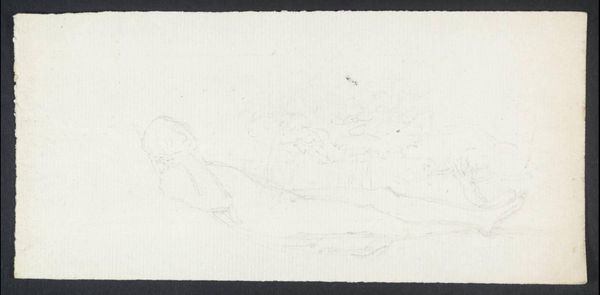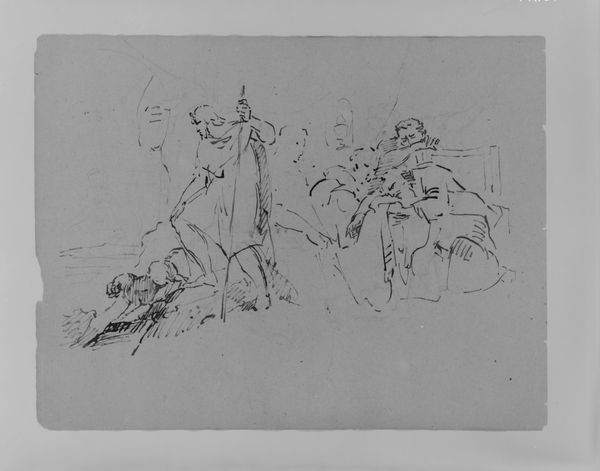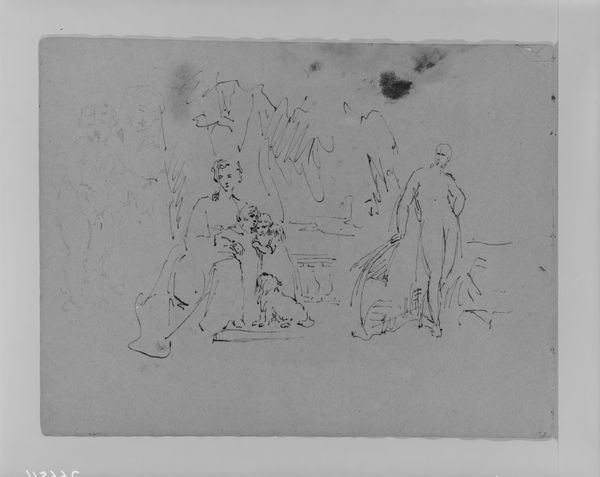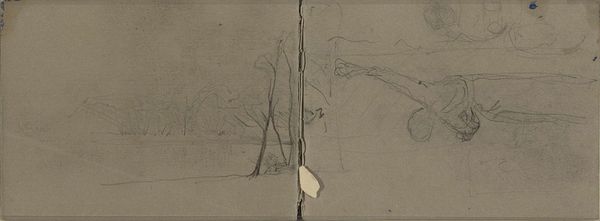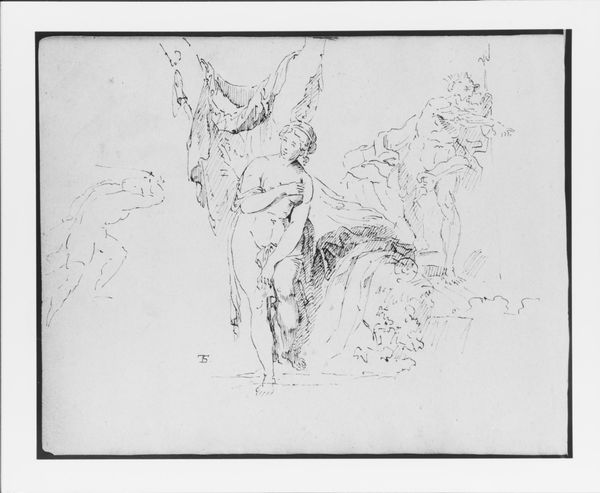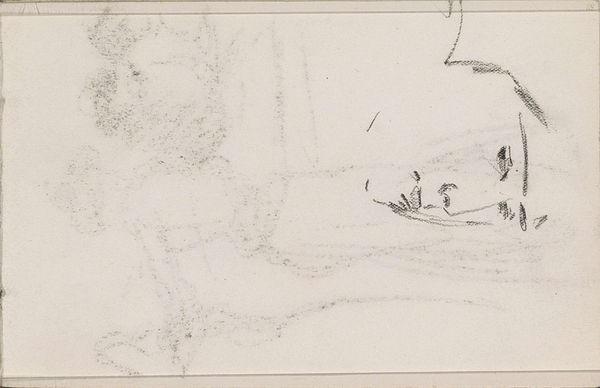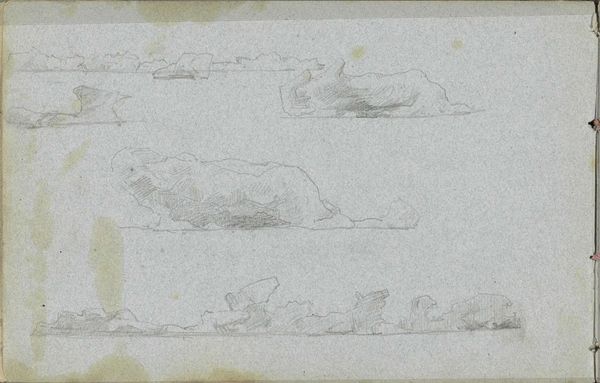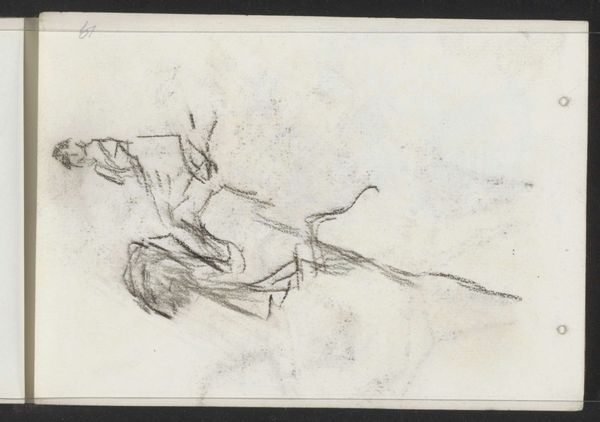
Study for "The Siege of Gibraltar": Sprawling Figures 1785 - 1786
0:00
0:00
drawing, pencil
#
drawing
#
neoclacissism
#
pencil sketch
#
figuration
#
pen-ink sketch
#
pencil
#
history-painting
Dimensions: 10 5/8 x 20 11/16 in. (27 x 52.5 cm)
Copyright: Public Domain
Editor: This drawing, "Study for 'The Siege of Gibraltar': Sprawling Figures," was created by John Singleton Copley between 1785 and 1786. It's a pencil study and feels very raw and immediate. I'm struck by the apparent chaos in the composition. What’s your interpretation of this preliminary sketch, and how does it relate to the final painting? Curator: The apparent chaos is actually a carefully constructed representation of the human cost of war. Look at the figures: their sprawled postures, the vulnerability conveyed in their limbs. Copley wasn't just depicting a historical event; he was probing the impact of imperial conflict on individual bodies and psyches. How do you think this approach might be challenging the traditional heroic narratives of neoclassical art? Editor: I see your point. It’s less about glorifying the battle and more about the suffering. The vulnerability definitely comes across, particularly in how unfinished and exposed they appear. So, would you say this challenges the glorification of war seen in a lot of history painting? Curator: Absolutely. Copley, through this sketch and likely the final painting, engages in a critical dialogue. Consider the power dynamics inherent in representing a siege – who are the victors and who are the vanquished, and how does Copley portray them? Are there markers of class, race, or national identity that become highlighted? Editor: I hadn't really considered that angle. Now that you mention it, I can see how Copley's use of vulnerable bodies amidst the chaotic sketch could serve as a critique of the power structures upheld by the siege. Thanks for shedding light on that. Curator: The sketch invites us to think about whose stories are prioritized in historical accounts and to reflect on art's capacity to disrupt prevailing ideologies. Thinking about representation, what did you observe and learn from our discussion?
Comments
No comments
Be the first to comment and join the conversation on the ultimate creative platform.
